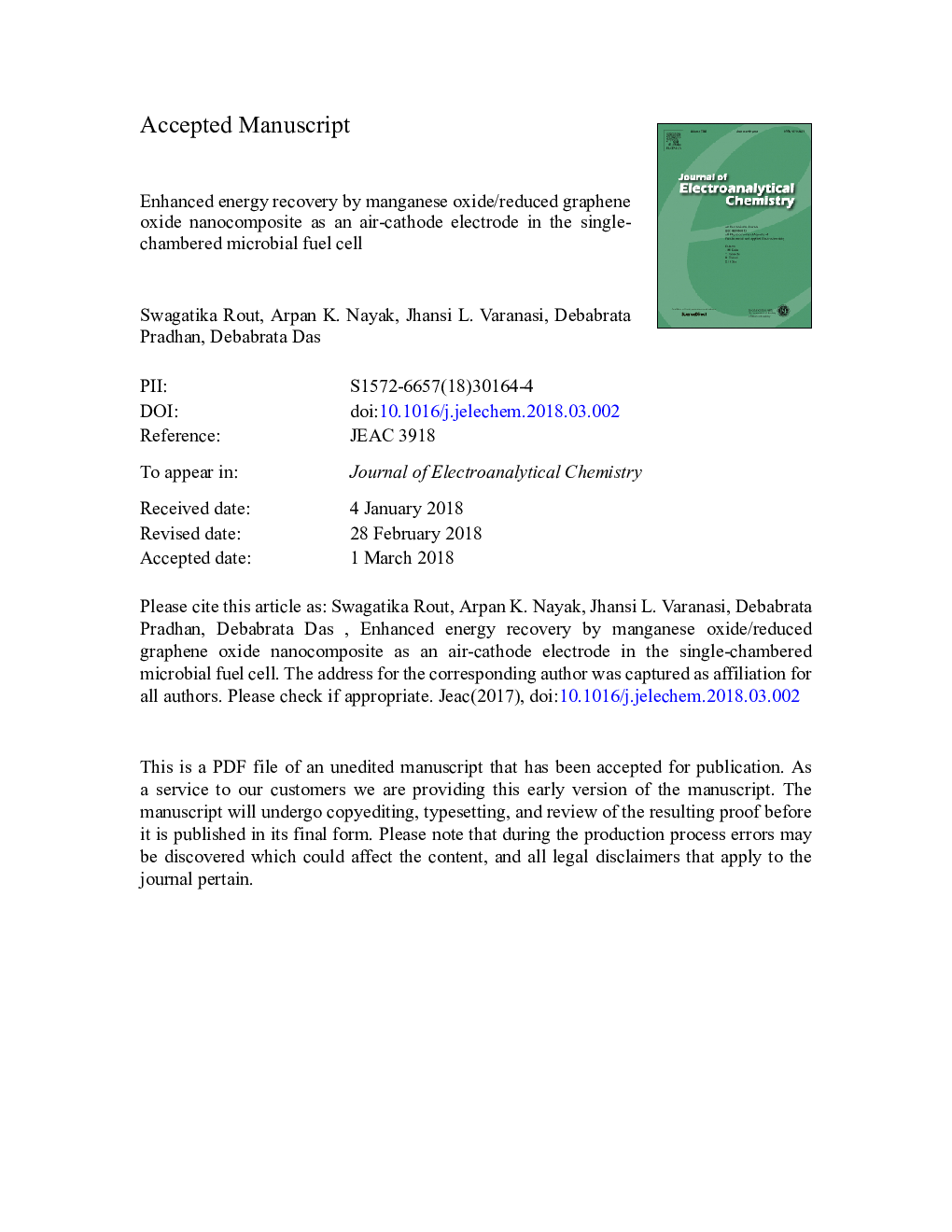| Article ID | Journal | Published Year | Pages | File Type |
|---|---|---|---|---|
| 6661892 | Journal of Electroanalytical Chemistry | 2018 | 25 Pages |
Abstract
Microbial fuel cells (MFCs) provide an opportunity to harvest electrical energy from biodegradable organic wastes. In air-cathode MFCs, cathode plays an important role at which oxygen reduction reaction (ORR) occurs. Herein, MnO2 nanorods are demonstrated as a potential air-cathode catalyst in a single-chambered MFC (sMFC). Synthesis of two different MnO2 morphologies (nanoflakes and nanorods) is demonstrated at room temperature using a simple precipitation method. In order to improve the performance of MnO2 as ORR electrocatalyst, graphene oxide (GO) is used as conductive matrix instead of carbon black. Furthermore, MnO2/GO is hydrothermally treated to obtain MnO2/reduced GO (h-MnO2/rGO) nanocomposite. The sMFC comprising air-cathode with an optimum loading of h-MnO2/rGO delivers 2.7 times higher volumetric power density than that of sMFC without a catalyst and comparable to the state-of-art Pt/C. This is ascribed to superior 4-electron ORR pathway by h-MnO2/rGO and improved charge transport behavior of rGO support as confirmed through detailed electrochemical investigation. This work demonstrates a facile room temperature synthesis process of MnO2 nanoflakes and nanorods, and their role as air-cathode electrocatalyst for competent power generation in sMFC.
Keywords
Related Topics
Physical Sciences and Engineering
Chemical Engineering
Chemical Engineering (General)
Authors
Swagatika Rout, Arpan K. Nayak, Jhansi L. Varanasi, Debabrata Pradhan, Debabrata Das,
